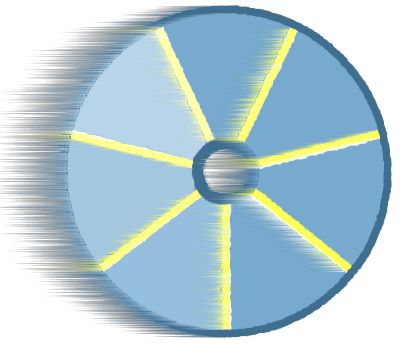Auxiliary Lanes Won’t Work
Caltrans EIR: Auxiliary Lanes Won’t Reduce Congestion or Improve Safety

Our County Regional Transportation Commission is spending over $100 million to build auxiliary lanes on Highway 1 from Soquel Avenue to State Park Drive. (An auxiliary lane starts at an onramp and ends at the next offramp.) The RTC plans to spend a greater amount on auxiliary lanes from State Park Dr. to Freedom Blvd.
The two reasons cited by our County’s Regional Transportation Plan for the project are:
- to relieve traffic congestion
- to improve safety
The auxiliary lanes will accomplish neither objective, according to Caltrans’ Environmental Impact Report on Highway 1 projects. The EIR analyzed the TSM Alternative, which included auxiliary lanes and ramp metering . The EIR concludes:
- The TSM Alternative “would result in very slight improvement in traffic congestion compared to the No Build Alternative.”
- “The total accident rates overall and by segment under the TSM Alternative would be the same as the accident rates for the No Build Alternative.”
- The Tier II EIR for the Soquel Dr. to 41st Ave auxiliary lane estimates, “the auxiliary lane alternative would slightly worsen traffic operations in the southbound peak commute hour”.
- The Draft EIR for the State Park Dr. to Freedom Blvd auxiliary lane estimates that congestion will worsen in the northbound peak commute period.
Why Does the RTC Still Propose Constructing Auxiliary Lanes?
The Regional Transportation Commission has yet to acknowledge the dissonance between the claim that the auxiliary lanes will improve safety and traffic congestion and the conclusions of the EIR.
Unofficially, some RTC members see the auxiliary lanes project as a stepping stone to the much larger project that would add High Occupancy Vehicle (HOV) lanes (carpool/ bus lanes). The artist’s rendering from the Draft EIR depicts a future Highway 1 that is twice the width of the current highway, with an HOV lane and auxiliary lane in each direction. A more realistic image would show a congested highway. The Draft EIR predicts that by 2035, Vehicle Miles Traveled on the expanded highway would increase by over 50% in the afternoon peak periods (2pm-8pm). Greenhouse gas emissions would rise along with vehicle miles traveled.
A San Francisco Chronicle article reports that 62% of the HOV lane-miles in the San Francisco Bay Area are degraded, leading to a proposal to increase the carpool requirement from two persons to three.
Read why expanding highways does not reduce congestion: Understanding Induced Travel
The HOV Project remains out of reach financially.
The RTC’s Unified Corridors Investment Study (2019) acknowledged that funds for the HOV Project would not be available until “after 2035”. That’s tantamount to admitting that project won’t be funded. California has redirected its spending priorities away from highway expansion.
Change of Priorities Needed
In spite of the fact that there is no prospect to fund the HOV Project, the RTC named the project its “preferred alternative” in October, 2017. Until the RTC acknowledges that the HOV lane project is not viable, it may be difficult for that body to embrace public transit alternatives such as:
- Genuine Bus-on-shoulder on Highway 1 (not the RTC’s plan to operate buses in aux lanes)
- Enhanced bus prioritization and service on Soquel Drive and Freedom Boulevard
- Transit on the rail corridor
No Congestion Relief
The TSM Alternative (including auxiliary lanes) “would result in very slight improvement in traffic congestion compared to the No Build Alternative.”
No Improvement in Safety
“The total accident rates overall and by segment in 2035 under the Tier I Corridor TSM Alternative would be the same as the accident rates for the No Build Alternative.”
Increase Greenhouse Gases
The EIR estimates a 25% increase in greenhouse gases resulting from the TSM Alternative relative to the No Build Alternative at year 2035. [Table 3-2]
